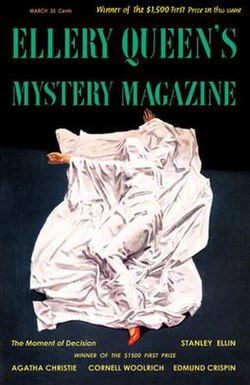시로하이드로클로로인
Sirohydrochlorin | |
| 식별자 | |
|---|---|
3D 모델(JSmol) | |
| 체비 | |
| 켐스파이더 | |
| 케그 | |
펍켐 CID | |
| |
| |
| 특성. | |
| C42H46N4O16 | |
| 외관 | 황색의 고체 |
달리 명시된 경우를 제외하고, 표준 상태(25°C [77°F], 100 kPa)의 재료에 대한 데이터가 제공된다. | |
| Infobox 참조 자료 | |
시로하이드로클로린은 시로하엠의 생합성에서 4중성 물질 대사 매개체로, 황산 환원효소 내 철 함유 보철성 그룹이다.메탄생성 마지막 단계에서 메탄의 방출을 촉진하는 효소인 공동작용제 F430의 생합성 전구체이기도 하다.[1]
구조
시로하이드로클로린은 1970년대 초 시금치에서 나오는 페레독신-니트라이트 환원효소에서 보철물의 무금속 형태임이 밝혀지면서 처음 격리됐다.[2]그것의 화학적 정체성은 분광과 총합성에 의해 확립되었다.[3][4][5]
생합성
시로하이드로클로린은 효소 디아미노아미노효소와 코신테아제에 의해 만들어진 사트라피롤릭 구조체 틀에서 파생되어 포포비린겐과 히드록시메틸빌레인을 통해 아미노레불린산을 우로포피리노겐 3으로 변형시킨다.후자는 혈액, 엽록소, 시로하임, 비타민 B에12 공통되는 첫 번째 매크로순환 중간이다.우로포피리노겐 3은 이후 두 개의 메틸 그룹을 추가하여 디히드로시히드로클로린을 형성하고 이것은 산화되어 시로하이드로클로린을 준다.[6]
참고 항목
- 시로하이드로클로린 페로켈라타아제는 철의 삽입을 촉진하여 시로헴을 형성하는 효소다.
- 시로하이드로클로린코발토헬라타아제는 코발트 삽입을 촉진하는 효소다.
참조
- ^ Mucha, Helmut; Keller, Eberhard; Weber, Hans; Lingens, Franz; Trösch, Walter (1985-10-07). "Sirohydrochlorin, a precursor of factor F430 biosynthesis in Methanobacterium thermoautotrophicum". FEBS Letters. 190 (1): 169–171. doi:10.1016/0014-5793(85)80451-8.
- ^ Murphy, M. J.; Siegel, L. M.; Tove, S. R.; Kamin, H. (1974). "Siroheme: A New Prosthetic Group Participating in Six-Electron Reduction Reactions Catalyzed by Both Sulfite and Nitrite Reductases". Proceedings of the National Academy of Sciences. 71 (3): 612–616. Bibcode:1974PNAS...71..612M. doi:10.1073/pnas.71.3.612. PMC 388061. PMID 4595566.
- ^ Scott, A. Ian; Irwin, Anthony J.; Siegel, Lewis M.; Shoolery, J. N. (1978). "Sirohydrochlorin. Prosthetic group of sulfite and nitrite reductases and its role in the biosynthesis of vitamin B12". Journal of the American Chemical Society. 100 (25): 7987–7994. doi:10.1021/ja00493a031.
- ^ Battersby, Alan R.; McDonald, Edward; Thompson, Mervyn; Bykhovsky, Vladimir Ya. (1978). "Biosynthesis of vitamin B12: Proof of A-B structure for sirohydrochlorin by its specific incorporation into cobyrinic acid". Journal of the Chemical Society, Chemical Communications (3): 150. doi:10.1039/C39780000150.
- ^ Block, Michael H.; Zimmerman, Steven C.; Henderson, Graeme B.; Turner, Simon P. D.; Westwood, Steven W.; Leeper, Finian J.; Battersby, Alan R. (1985). "Syntheses relevant to vitamin B12 biosynthesis: Synthesis of sirohydrochlorin and of its octamethyl ester". Journal of the Chemical Society, Chemical Communications (16): 1061. doi:10.1039/C39850001061.
- ^ Battersby, Alan R. (2000). "Tetrapyrroles: The pigments of life: A Millennium review". Natural Product Reports. 17 (6): 507–526. doi:10.1039/B002635M. PMID 11152419.


